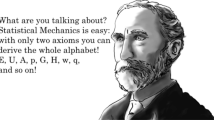Abstract
In connection with the unresolved, all three components of the problem of low-parametric equations of state retain their relevance: obtaining new ones, improving known ones and choosing optimal equations. New analytical and calculated results obtained in the framework of the model of interacting point centers are presented. A procedure for the choice of equations of state in a one-parameter family has been proposed and tested by calculations of the critical isotherms of argon and perfluorocyclobutane. The comparison for the two substances showed that the equation of state selected by the new method turns out to be better than the “simplest and best” proposed by Martin on the basis of volume translation. The mean absolute deviations, in percent, were for Ar (reduced densities from 0.01 to 1.8): 3.3 (our equation of state), 5.25 (Martin), 7.3 (Redlich-Kwong). For C4F8 (reduced densities from 0.06 to 1.5): 1.33% is our equation, 2.76—Peng-Robinson, 3.92-Martin, 7.46—Redlich-Kwong. There are no adjustable parameters in the point center model.
A method for comparing equations and determining equations-analogues in different families based on new characteristic data, which reflects the ratio of configurational contributions to pressure determined by the forces of attraction and repulsion, is proposed.
The molecular level information confirms the predicted intervals of the values of the new parameter, which is another physical rationale for the model being developed.
Access this chapter
Tax calculation will be finalised at checkout
Purchases are for personal use only
Similar content being viewed by others
References
Batalin, O.Yu., Brusilovsky, A.I., Zakharov, M.Yu.: Phase Equilibria in Natural Hydrocarbon Systems, 272 p. Nedra (1992). [in Russian]
Wales, S.: Phase Equilibria in Chemical Technology: In 2 parts. Mir (1989). [in Russian]
Anderko, A.: Equation of state methods for the modeling of phase equilibria. Fluid Phase Equilib. 61, 145–225 (1990)
Redlich, O., Kwong, J.N.S.: On the Thermodynamics of Solutions. V. An Equation of state. Fugacities of gaseous solutions. Chem. Rev. 44, 233–244 (1949)
Vukalovich, M.P., Novikov, I.I.: The Equation of State of Real Gases. Energoizdat, Moscow (1948). [in Russian]
Martin, J.J.: Cubic equation of state-which? Ind. Eng. Chem. Fundam. 18(2), 81–97 (1979)
Petrik, G.G.: Problems of low-parametrical equations of state. J.Phys.: Conf. Ser. 891, 012328 (2017)
Petrik, G.G.: On the systematic approach to the search for an adequate equation of state and the first non-standard results. Protsessy v geosredah, no. 3, pp. 255–266 (2016). [in Russian]
Petrik, G.G., Gadzhiyeva, Z.R.: The one-parameter family of equations of state based on the point center model and its connection to the one-parameter law of the corresponding states. Monitoring. Sci. Technol. 1, 67–78 (2010)
Martin, J.J.: Equations of state. Ind. Eng. Chem. 59(12), 34 (1967)
Lin, H., Duan, Y.-Y., Zhang, T., Huang, Z.-M.: Volumetric property improvement for the Soave-Redlich-Kwong equation of state. Ind. Eng. Chem. Res. 45, 1829–1839 (2006)
Hakayati, J., Roosta, A., Javanmardi, J.: Volumetric properties of supercritical carbon dioxide from volume-translated and modified Peng-Robinson equation of state. Corean J. Chem. Eng. 33(11), 3231–3244 (2016). 10.1007/s11814-016-0176-5
Clausius, R.: Ann. Phys. Chem. IX, 337 (1881)
Petrik, G.G., Gadzhiyeva, Z.R.: In search of adequate models. On the new approach to obtaining thermal equations of state and its capabilities. Vestnik DSC of RAS. 27, 5–12 (2007). [in Russian]
Petrik, G.G.: The equation of state of van der Waals and its modifications in the model of interacting point centers. Interuniversity collection. Scientific papers “Physico-chemical aspects of the study of clusters, nanostructures and nanomaterials.” Tver State University, no. 4 (2014). [in Russian]
Petrik, G.G.: On a new approach to obtaining physically sound equations of state. 1. Model of interacting point centers. Monitoring. Nauka i technologii, no. 1, pp. 45–61 (2009). [in Russian]
Petrik, G.G.: On a new approach to obtaining physically sound equations of state. 3. The search for the optimal form of the repulsive contribution. Monitoring. Sci. Technol. 3, 84–97 (2010). [in English]
Petrik, G.G. O:n a new approach to obtaining of physically substantiated equation of the state. 2. A search of optimal functional form of attractive term. Monitoring. Nauka i technologii, no. 2, pp. 79–92 (2010). [in Russian]
Petrik, G.G.: To the possible solution of «the problem of the third parameter» for low-parametric equations of state. Monitoring. Nauka i technologii, no. 2, pp. 70–81 (2017). [in Russian]
Petrik, G.G.: A new thermal equation of state—a physically based mathematical model. In: Proceedings of the II International School of Young Scientists “Physical and mathematical modeling of processes in geomedian”, IPM RAS, Moscow, 19–21 October, pp. 130–134 (2016)
Vera, J.H., Huron, M.J., Vidal, J.: On the flexibility and limitations of cubic equations of state. Chem. Eng. Commun. 26, 311–318 (1984)
Petrik, G.G.: On some new analytical and design capabilities of a simple molecular thermodynamic model. Monitoring. Sci. Technol. 3, 55–64 (2018). https://doi.org/10.25714/MNT.2018.36.007. [in English]
Petrik, G.G.: On low parameter EOS—unnoticed anniversary, missed and realized opportunities. Bulletin of Novgorod State University Yaroslav the Wise 5(103), 36–43 (2017). [in Russian]
Petrik, G.G.: Boyle—Bachinsky curve and its parameters in the model of interacting point centers. Monitoring. Sci. Technol. 1, 87–98 (2011). [in English]
Petrik, G.G.: On the hierarchy of bonds of the critical molar volume of substances with effective intrinsic volumes of molecules at specific points of intermolecular curves. Monitoring. Sci. Technol. 4, 80–92 (2012). [in English]
Petrik, G.G., Todorovsky, B.E.: Потенциал сферических оболочек. Общие соотношения между параметрами потенциалов взаимодействия свободных и связанных атомов. Jurnal fizicheskoi himii. 62(12), 3257–3263 (1988). [in Russian]
Author information
Authors and Affiliations
Corresponding author
Editor information
Editors and Affiliations
Rights and permissions
Copyright information
© 2019 Springer Nature Switzerland AG
About this paper
Cite this paper
Petrik, G.G. (2019). A Model Approach to Comparing and Selecting the Optimal Equations of State. In: Karev, V., Klimov, D., Pokazeev, K. (eds) Physical and Mathematical Modeling of Earth and Environment Processes (2018). Springer Proceedings in Earth and Environmental Sciences. Springer, Cham. https://doi.org/10.1007/978-3-030-11533-3_20
Download citation
DOI: https://doi.org/10.1007/978-3-030-11533-3_20
Published:
Publisher Name: Springer, Cham
Print ISBN: 978-3-030-11532-6
Online ISBN: 978-3-030-11533-3
eBook Packages: Earth and Environmental ScienceEarth and Environmental Science (R0)




